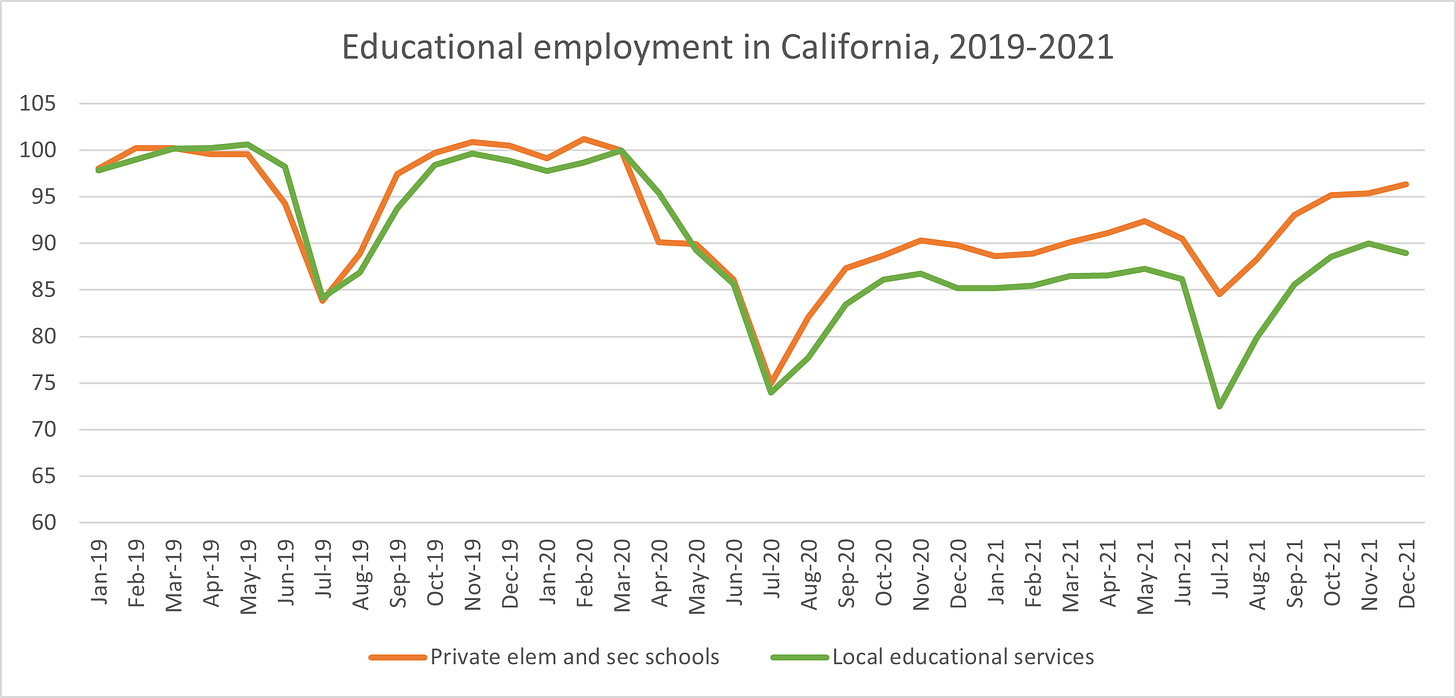Executive Order unlikely to make any major progress with hiring teachers
Also - on the public/private divide
The ongoing K-12 school “employment crisis” is something I’ve written about before, and it is now at the attention of Gavin Newsom through a new Executive Order signed by the Governor which will make hiring substitutes for longer hours, as well as the rehiring of previously-retired teachers, easier. I thought I would use what I’ve written on this topic to shed some light on the debates about the order. To me, as the parent of a 5 year old, it is a very big issue.
First of all, here is the text of the Executive Order, which has a few points of interest. For example, there was already an EO last year that tried to make the rehiring of previously-retired teachers easier - suggesting the new EO is unlikely to help that much, especially for such a short-term expiring order. Also interesting to note in the text is that there were already resources booked in the 2021-2022 state budget ($2.9 billion), precisely for staff recruiting initiatives. Based on the most recent data, it doesn’t seem like that spending has been very effective, although the text does mention these are longer-term initiatives, so perhaps we need to wait a few years to see.
Regarding debates over “what to do?”, some are arguing the crisis we’re facing is Omicron-induced (even Newsom’s EO is clearly within the context of it, forcing the flexibilities to expire in March!). But that’s not true. The sector’s employment has been down since 2020 and has stayed down even as schools reopened, which I first commented on back in September. It needs continuous support and a focus on solutions instead of patching over problems.
Second, while it is true that public and private schools are affected by the shortage, the problem is much more severe in public schools. Indeed, even as the EO is, of course, focused on public school districts, private schools have seen the greatest improvements in employment since Summer 2020. This is true for both the Fall 2020 wave (when public schools were generally closed) and the Fall 2021 wave (when most schools were fully open).
See the graph abov , which indexes employment data in California for the “Elementary and Secondary School” (basically, private K-12 schools) and “Local Educational Services” (public K-12 schools) sectors so that the index = 100 is for March 2020. According to my calculations, today private schools are about 4% off pre-pandemic employment, whereas public schools are about 11% off. Unfortunately we don’t have this kind of detailed information at the metro area, but it’s safe to assume this problem isn’t concentrated in just a few districts.
I will not make any claims about what is causing these differences. Have private schools simply endured the turbulence better, or are they doing some things the public schools will not (or cannot) do? How much of the teacher shortage is about low pay or supply issues, or even demand issues? These are big questions.
I think regardless of where you fall politically, most agree based on these statistics that, ultimately, we need to be creative and think about ways to improve working conditions, creating safe, attractive environments for our teachers. And most importantly, our kids should be back in school. It is crucial for their development in so many ways.



